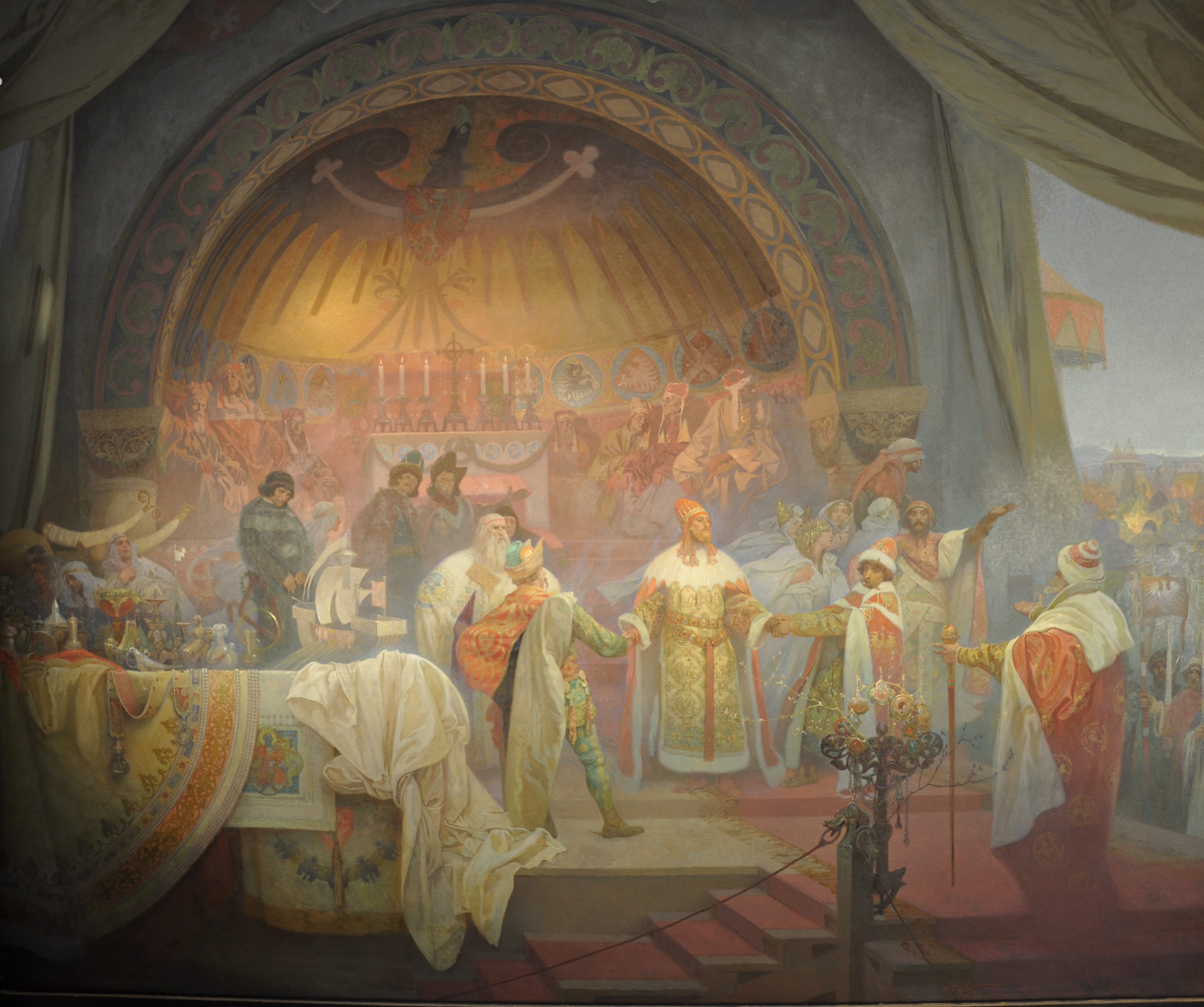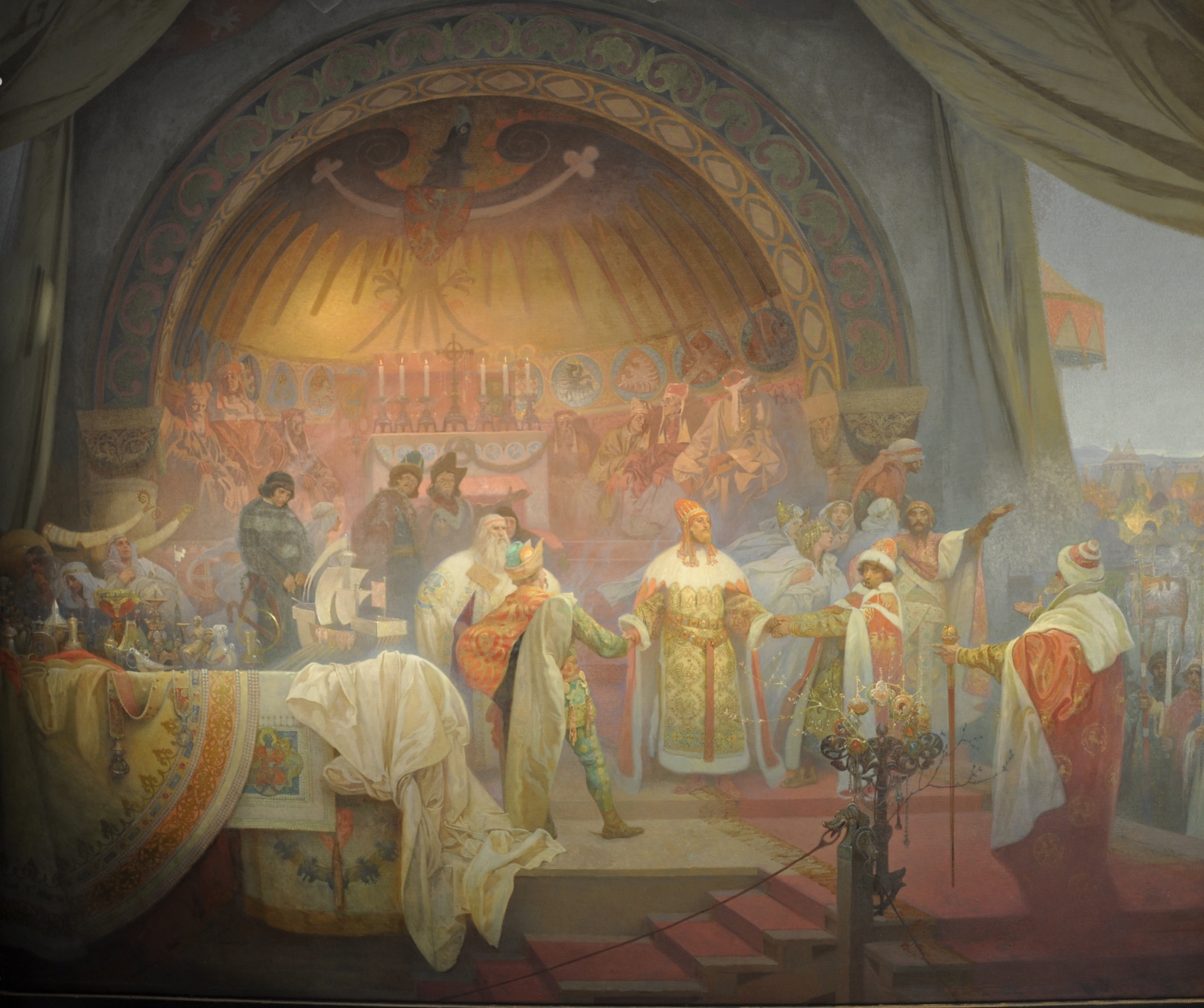KING OTTOKAR II OF BOHEMIA
Wenceslas I left his son Ottokar II (1253–1278) with a rich legacy. The Czech lands experienced a period of prosperity, and the Přemyslids were among the most powerful rulers in Europe. Kutná Hora provided an abundance of silver, resulting in a large income. Due to his wealth and generosity, Ottokar was called the "Golden King". The Czech Empire expanded in Austria to include Styria, Egerland, Carinthia, Carniola and other territories.
Ottokar had a major long-time rival, Béla IV, from the Hungarian Árpád dynasty. Their disputes culminated on July 12, 1260, with the Battle of Kressenbrunn. Ottokar's famous "iron cavalry", which earned him the nickname the "Iron King", dominated the field and forced the Hungarians to flee chaotically. Ottokar seized Bratislava, coercing Béla to engage in peace negotiations.
After the victory, Ottokar II wanted to consolidate a lasting peace through a series of political marriages to Árpáds. He divorced Margaret of Babenberg and married Kunigunde, the granddaughter of Béla IV. He also arranged the marriage of Béla's second-born namesake son, Béla, to his niece Kunigunde of Brandenburg. The wedding of Béla and Kunigunde took place on October 25, 1264, on Žitný ostrov river island. Ottokar II used the ceremony to demonstrate that his reputation was absolutely justified. The painting shows the most influential European ruler of the 13th century in a tent town built especially for the wedding. He warmly greets his recent opponents. There are King Daniel of Galicia and Serbian King Stefan Uroš I, with both sons Dragutin and Milutin, Duke of Croatia, Bosnian, Transylvania and Bulgaria, princes, counts and knights from Germany, Poland, Eastern Europe and the Balkans.
Ottokar II was the most serious contender for the throne of the Roman Emperor. The electors, however, decided to choose the then inconsequential prince: Rudolf I of Germany, from the house of Habsburg. Even the peace gained through political marriages did not last long. In 1273, the Hungarians invaded Moravia again. In 1276, Ottokar II had to face the invasion of the troops of the new Roman Emperor. He was forced to sign the armistice with Rudolf and lost numerous territories. Ottokar also had to face the rebellion of Czech noblemen. His last fight took place on August 26, 1278, in the Battle on the Marchfeld, where Ottokar II was defeated and killed.

